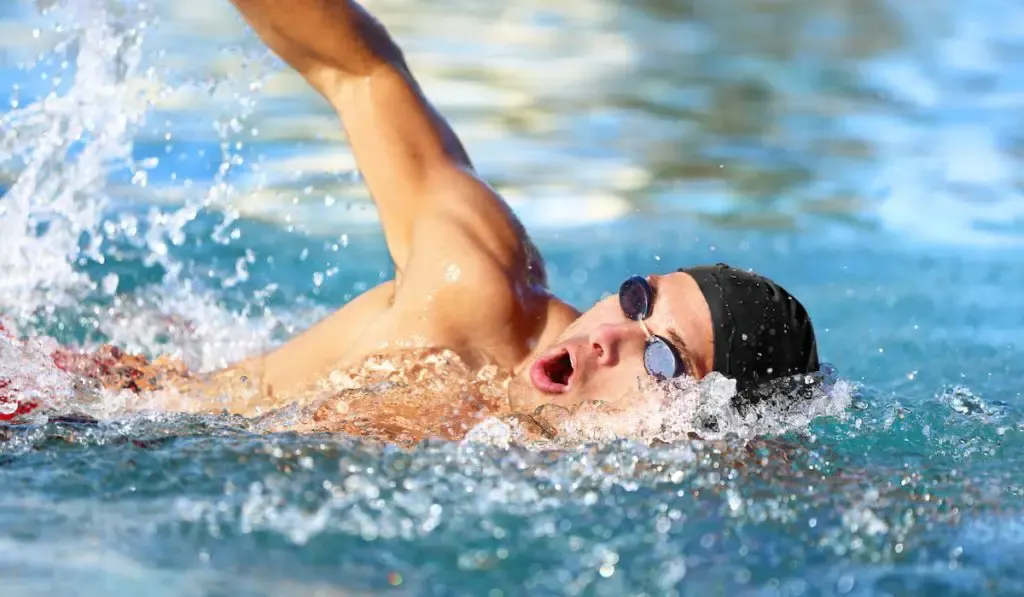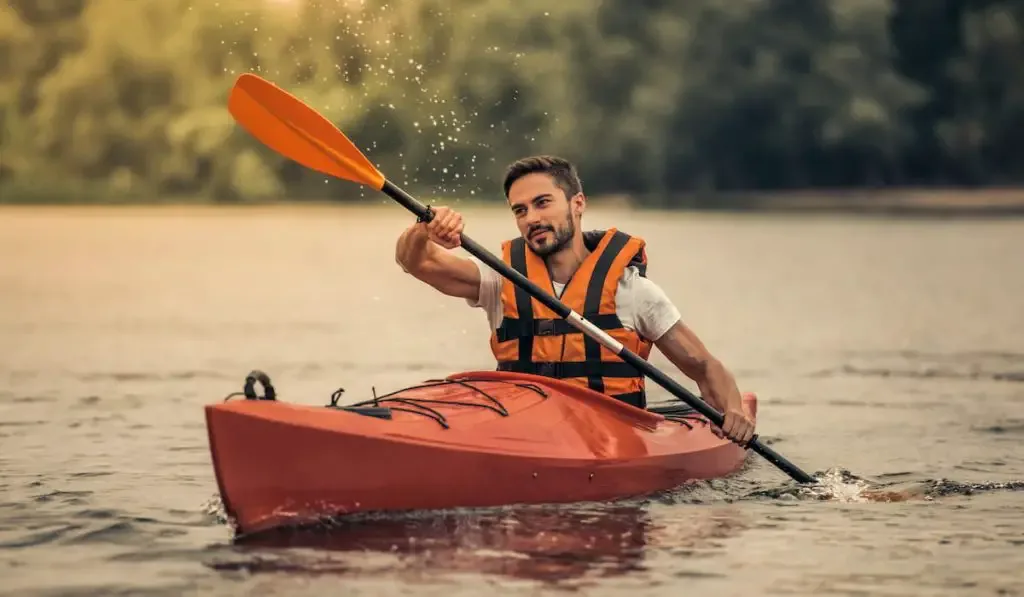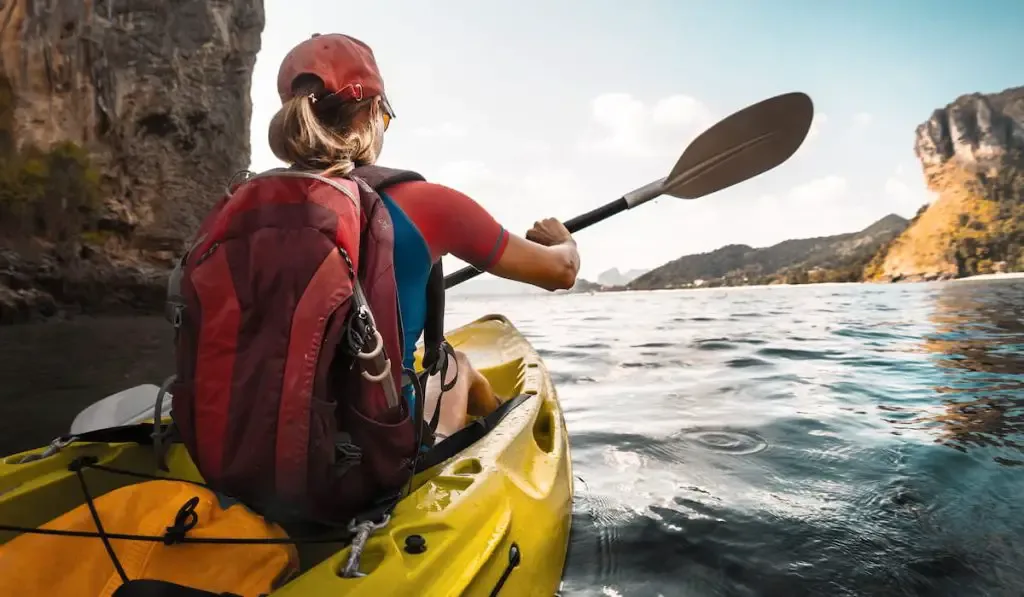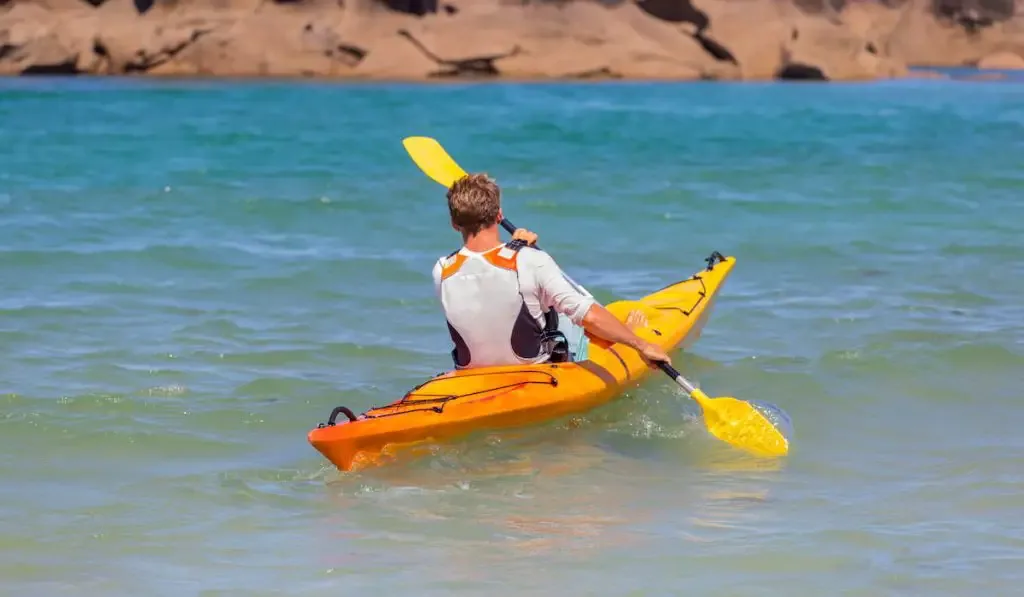As a non-swimmer, the thought of going kayaking might not appeal to you because water is involved. But should you really be worried about the water? Should your inability to swim keep you from kayaking? Let us find out!
Is it necessary to know how to swim to kayak?
It is not necessary to know how to swim to pursue kayaking. Nonetheless, non-swimmers who go kayaking must be willing to take precautions.

At the least, a non-swimmer who goes kayaking should not be aquaphobic. Also, having a group of people around while one is kayaking offers some level of confidence.
There are many other precautions non-swimmers should take while kayaking. And in the rest of this article, we talk about just that. We also discuss the general risks that come with kayaking and much more.
Is It Necessary to Know How to Swim to Kayak?
It is not necessary to know how to swim for kayaking. A good number of kayakers you see do not know how to swim, yet they kayak successfully.
In a way, kayaking is a substitute for swimming. You get to enjoy the water without getting in it or getting wet.
Of course, swimmers can choose to get out of their kayak, get in the water, and get wet. But as a non-swimmer, you may not want to exit the kayak and get in the water. So, if you learn to kayak without getting out of your watercraft, you should be fine.
Kayaking as a Non-Swimmer
Learning to kayak without exiting your kayak is not all you need as a non-swimmer. Ensuring the following safety measures are in place is prudent:
Go Kayaking With Excellent Swimmers
For your safety, you should always go kayaking with a group of people, preferably friends or relatives. Ensure that the group of people are proficient swimmers. So, if anything goes wrong while you kayak, someone will be able to help.
Always Wear a Life Jacket or Personal Floatation Device (PFD)
Coastal laws compel anyone going kayaking to wear a personal floatation device – swimmer or non-swimmer. But besides being mandated by the law, a life jacket offers you extra safety if you are a non-swimmer.
If anything goes wrong and you are thrown in the water, the life jacket will help you stay afloat for a while. Most people cannot stay afloat on their own. But with a PFD, anyone can stay afloat for an extended time with almost no effort.
Kayaks are floatation devices themselves. But the thing is, when you are in the water, reentering your kayak would be difficult. The life jacket would keep you floating, however. This way, you can get back into your kayak with relatively more ease.
You should verify that your PFD is functional before you take it kayaking. As a non-swimmer, you could try it out in a small body of water you feel safe in.
Get Over Your Fear of Water
If your inability to swim stems from aquaphobia, kayaking might be almost impossible for you. Any slight contact with water may freak you out and cause you to panic. Unfortunately, while panicking, you could end up throwing yourself in the water. Of course, this can only happen if the aquaphobia does not stop you from getting on the water in the first place.
So, before you go kayaking, work on getting rid of your fear of water. Aquaphobia is treatable with psychotherapy. Once treated, you should be able to get on the water without panicking.
Get Some Kayak Lessons
As a beginner and a non-swimmer looking to kayak, taking lessons will help you a lot. Kayak lessons that teach a wet exit are tremendously helpful to non-swimming kayakers.
If your kayak topples and you get submerged underwater, you can get yourself together using the wet exit.
The wet exit technique teaches you how to escape from the kayak while submerged. It also teaches you how to grab onto the kayak for safety and how to reenter it.

Is It Safe to Kayak Without Knowing How to Swim?
With the proper precautions, it is safe to kayak without knowing how to swim. As we have already explained, kayaking does not require swimming skills. You only need to set your mind to it and take the necessary steps for safety.
Going kayaking with a group of people with excellent swimming skills is one of the safety steps you can take as a non-swimmer. That aside, you could also get yourself an instructor. The instructor will help with your progress and assist when you face difficulties.
Another measure that can make kayaking safe for non-swimmers is wearing a life jacket. With a life jacket, you will remain afloat for a long time. This way, help should get to you before everything goes awry.
You may also want to learn the wet exit technique as a non-swimming kayaker. If you master the said skill, you should have little or no trouble saving yourself if the kayak topples.

What Are the Risks of Kayaking?
Kayaking is one of the safest water activities anyone can take part in. But even at that, it comes with a couple of risks.
Some of the risks include the following:
Hypothermia
If you go kayaking when it is pretty cold, you expose yourself to the possibility of hypothermia.
If your kayak topples, you will get submerged in below 60°F water. If this happens, you may suffer cold water shock.
Cold water shock typically impedes breathing and movement. Of course, since you cannot move, you cannot get out of the water. The longer you spend in the cold water, the more your core temperature drops. As your core temperature drops, you get closer to hypothermia.
The good news is, you can prepare against hypothermia and cold water shock. All you need to do is wear a wetsuit or drysuit alongside your personal floatation device (PFD). Going with extra clothes and a group of people is also advisable.
Exposure to the Elements
While kayaking, you get to enjoy the beauty of the environment – the water, the sun, and the gentle breeze. But at the same time, you are open to the harshness of the weather.
Kayaks do not offer shelter. So, when the weather gets intense, you are exposed to the elements in their unkind form. For one, if you stay out under the sun for long, you are at risk of heat stroke, sunburn, heat exhaustion, and dehydration.
Also, when there is a storm, you sure would not want to be kayaking. During storms, kayaks get tossed around, visibility drops, temperature drops, and one can get hit by lightning.
To ensure you are not exposed to the elements in their unforgiving forms, pay attention to the weather forecast before going out.
Drowning
Drowning is a potential risk of any water activity. Now, does that mean you should not kayak if you cannot swim? No, it does not. Even the best swimmers can drown if they do not take the correct precautions.
The use of a life jacket, or PFD, and knowledge of capsize drills (such as the wet exit technique) are some vital precautions one must take to avoid drowning.
With the precautions above, you should be able to save yourself and reclaim control of the situation. At the least, your life jacket should keep you afloat for a long while until help comes.
Capsizing
Most of the risks of kayaking are connected to capsizing. They either lead to your kayak capsizing or are caused by your kayak capsizing.
A capsizing kayak is pretty commonplace in kayaking. Going by that statement, you, a non-swimmer, might be wondering if it is still a good idea to go kayaking.
Well, as we have said before, being a non-swimmer does not stop you from kayaking. As long as you are familiar with self-rescue techniques and wear your PFD, you should be fine.
Of course, you should not panic when your kayak capsizes. If you panic, you may not remember how to save yourself.
Getting Lost
If you kayak too far on the open water, you may get lost. Interestingly, you may not realize how far you have gone until you stop to pay attention.
Since open waters like seas do not have signposts, getting lost is not hard. The whole surface of the water is pretty much the same, so nothing gives you a sense of direction.
Keeping yourself from getting lost at sea while kayaking is pretty simple:
- Kayak in a group when hitting the sea or open ocean. However, if you choose to go alone, do not lose sight of the shore.
- Get a kayak compass or GPS to help with navigation.
- Pay attention to how long you and how far you have been kayaking.

Can You Kayak Without Experience?
You might be able to kayak without experience. Kayaking is pretty uncomplicated, and anyone can learn to kayak within a short period.
In fact, beginner kayakers with excellent swimming skills and remarkable fitness usually learn to paddle in a few hours. Of course, they might not be the sharpest kayaker at the start. But with time, they will get better.
What Skills Does Kayaking Require?
The following are some skills beginner kayakers should know:
- Paddle holding
- Wet exit
- Forward stroke
- Reverse stroke
- Sweep stroke
- Wind compensation skills
Final Take
You do not have to know how to swim or be an excellent swimmer before you go kayaking. As long as you take the necessary precautions and are not aquaphobic, you should be fine even if your kayak capsizes.
Pay attention to the weather forecast before you go kayaking. You would not want to be caught in a storm or the intense heat of the sun while kayaking.
Resources
- https://www.watersportgeek.com/kayaking-non-swimmers/
- https://kayakingventure.com/kayaks-swim/
- https://www.healthline.com/health/aquaphobia
- https://threesisterskayakrental.com/go-kayaking-cant-swim/amp/
- https://www.watersportswhiz.com/is-kayaking-dangerous/
- https://threesisterskayakrental.com/need-experience-ride-kayak/
- https://mpora.com/kayaking/kayaking-techniques-beginners/
